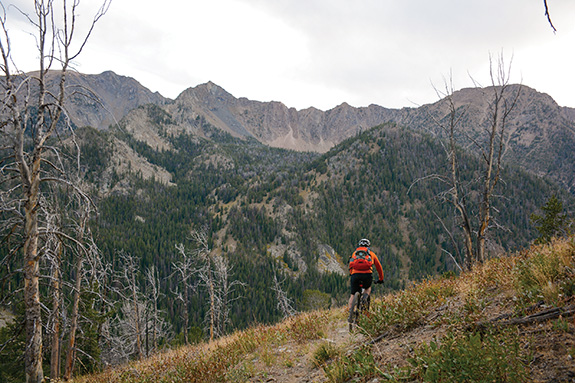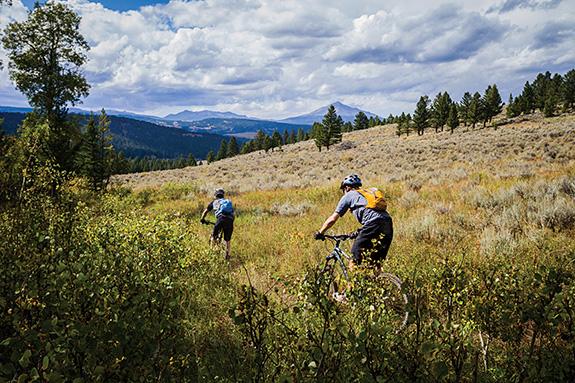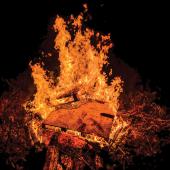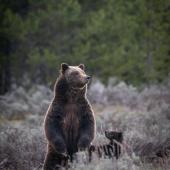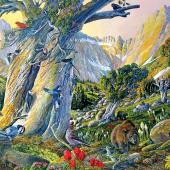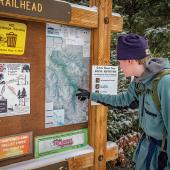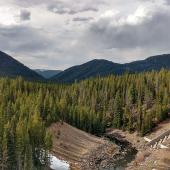Gallatin Gone Wild
Bozeman reacts to Wilderness recommendations.
If one were to choose the American city with the greatest wildlands opportunities, few could compete with Bozeman.
Mountains rise in all directions, with vast forests and abundant wildlife.
Within a hundred miles of town, there are more than a million acres of Congressionally-designated Wilderness, like the Lee Metcalf and Absaroka-Beartooth, which are protected under the 1964 Wilderness Act.
Additionally, there are approximately one million acres of potential new Wilderness in southwest Montana, and some of these roadless areas are at the center of a debate about public-lands management.
As the Custer-Gallatin National Forest revises its Forest Plan—a document that determines which users have access to which lands for the next 30 years—the debate has intensified. Part of the Forest Service’s mandate is to recommend lands for Wilderness designation; a draft of that recommendation was released in January of this year, with a revision following in April. Needless to say, reactions to the draft covered the spectrum from satisfied to outraged.
With another round of public comment slated for this fall, we asked local advocates and involved parties to weigh in to better inform Bozemanites about the debate. Here’s what they had to say.
The United States Forest Service, —Mariah Leuschen-Lonergan
The Custer Gallatin Forest National is one of the ten most-visited national forests in the nation, and it’s no question that many neighboring communities around the Forest are seeing growth. Ultimately, we live in a special place and as stewards of this place we will continue to seek ways for a variety of users to enjoy the landscape, while continuing to care for our shared resources into the future. We need to find a delicate balance to a complex topic.
Alternatives developed recently are based on public comment received and provide a spectrum of recommended Wilderness proposals, as well as lands to be removed from consideration. (Summaries and maps are available online at fs.usda.gov/custergallatin.) This public input helps us weigh the benefits, impacts, and tradeoffs of each given alternative.
It’s you that enjoy the Forest, so you’ll want to pay attention to the Custer Gallatin Forest Plan. About halfway through the process, the Plan Revision Team is coming out with the draft plan and draft Environmental Impact Statement (EIS) this fall. As part of the foundation for the draft plan, January’s proposed action served as a starting point to looking at Recommended Wilderness proposals across the Forest. Recommended Wilderness and the variations of designated areas, including Recreation Emphasis Areas and Backcountry Areas, are one of the items that we’ve heard the most about in public comment.
As stewards of this landscape, we know this place is special. The Custer Gallatin National Forest is an essential component to the lands that surround it, connecting the largest intact ecosystem in the lower 48. Know that we don’t take revision-planning lightly.
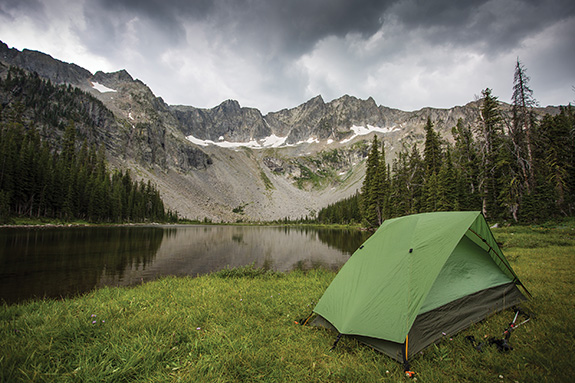
Montanans for Gallatin Wilderness, —Phil Knight
The Custer-Gallatin National Forest surrounding Bozeman and Livingston is where most of us go to experience wild nature and enjoy our public lands. In April, the Forest Service released its range of five alternatives for public review. Alternative A is “no action,” meaning nothing changes from status quo. Alternative B is little different from the Proposed Action released in January.
Which raises the question, why did they take public input and then make very few changes? Thousands of people weighed in during the 60-day comment period this past winter, showing a high level of interest in the process and outcome.
The Forest Service’s proposal calls for a scaled-down Recommended Wilderness (RW) in the Gallatin Range, RW in the Lionhead, a Backcountry Area in Buffalo Horn, and a few other small RWs areas in the Pryor, Madison, and Absaroka-Beartooth ranges. The Bridgers and Crazies get a whole lot of nothing.
Alternatives C, D, and E cover a wide range of possibilities. Alternative C is close to the Gallatin Forest Partnership proposal, with some RW areas and a Recreation Emphasis area in Hyalite, and Backcountry Areas in lieu of Wildlife Management Areas.
Alternative D is the crazy alternative with ALL roadless areas turned over to RW, including iconic mountain biking and snowmobiling areas like Chestnut Mountain and Buck Ridge.
This leaves advocates for RW in some of the more important roadless areas, like Hyalite Porcupine Buffalo Horn, without an alternative we can rally around. Alternative E has no RW but instead has some large Backcountry Areas, such as the core of the Gallatin Range and the Lionhead Area. Backcountry designation means very little as there is no specific protection offered other than “low levels of existing development.” So it would offer less protection to land and wildlife than the Proposed Action, but most uses would be allowed.
Ultimately, the Forest Service will probably release a final plan very similar to the Proposed Action unless enough people speak loudly enough for something different. This land is our land—let’s make sure they make the right decisions.
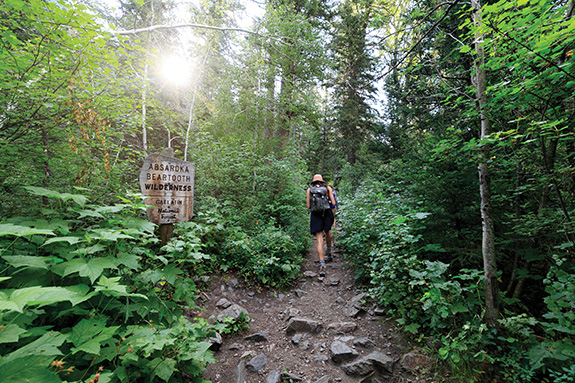
Citizens for Balanced Use, —Kerry White
Public-land management trends over the last 20 years include restricting many uses and limiting access. In the Gallatin portion of the forest alone, there are 715,000 acres of designated Wilderness and another 740,000 acres of inventoried roadless, leaving a mere 350,000 acres open to multiple-use recreation and active forest management. Initial proposals, in the new plan, from the Custer-Gallatin propose increasing existing restrictions on multiple-use recreation and active management.
The Forest Service Interdisciplinary Team should pay close attention to the needs of the people and what the Recreation Specialist Report found: “National trends indicate that aging populations may desire more accessible opportunities. Motorized recreation has increased significantly from 2000, with a 300% increase in off-highway vehicle registration and a close to 200% increase in snowmobile registration.”
Clearly, the CGNF’s Forest Plan favors more closures. An RW designation, in effect, places an area into Wilderness management, but only Congress has the authority to designate Wilderness Areas. The Custer-Gallatin National Forest has indicated they will remove all motorized and mechanized use in the areas they simply recommend for Wilderness designation, and surveys show less than 3% of the public recreates in Wilderness.
Our demographics indicate an aging population and the need for more opportunities for the elderly and disabled to access our federally managed public lands. However, the new Forest Plan is posed to close even more access. Intolerance and prejudice by environmental groups against this segment of our population is unacceptable, but conservationists have a large influence over Forest Service planning, decisions, and actions.
Our public lands should be open to everyone to enjoy with family and friends. The decision on the new Forest Plan will either provide these opportunities or further restrict them. Pay attention to this plan as it evolves over the next year. Voice your support for multiple-use recreation and a shared-use vision of our public lands.

Gallatin Forest Partnership, —Adam Oliver
The Gallatin Forest Partnership (GFP) arose in 2016 in response to forest planning. Representatives from the surrounding communities, conservation groups, recreation groups, hunters, outfitters, and guides worked to find common ground around the Gallatin Range.
Although the Custer-Gallatin National Forest is three million acres, we focused on the Gallatin Range first and pulled in surrounding areas like the Madison Range as they became relevant to the discussion. Because of changing management of public land, growing population, and especially the contentious Hyalite Porcupine Buffalo Horn Wilderness Study Area, these were difficult discussions. Put a dozen or so people who are passionate about public land in one room and there are bound to be some interesting results!
Because we were committed to finding a lasting solution instead of a temporary bandage, we made a lot of progress. One of the critical things we discovered was that most of our values were similar: we wanted the same intact ecosystem, the same views and unique experiences in the backcountry. Concentrating recreation makes sense for one area, while another area would be better to protect in its current state.
The GFP agreement includes Recommended Wilderness for the core of the Gallatin Range and the Sawtooth area bordering Yellowstone, as well as some pieces that improve connectivity for wildlife within existing designated Wilderness. A recreation area is proposed for the Hyalite watershed, which would improve opportunities near town and protect Bozeman’s major drinking-water source. Motorized recreation would have access to areas and trails that they currently have, including the historic Big Sky Snowmobile Trail. These different designations protect or enhance a variety of qualities, places, and access on the landscape.
Citizens near and far have supported this agreement through public comment to the Forest Service during the scoping phase of the Forest Plan Revision. The proposed action was released early January, giving us an idea of the general direction the Forest Service is going. In April, we learned more about the alternatives. The Forest Service posted several preliminary alternative maps that are not final and don’t include management detail. Our agreement can be seen in maps as well as written detail at gallatinpartners.org.
The good news is that the Forest Service heard the GFP. The map for the current “alternative C” has a lot in common with the GFP agreement. Compared to the other alternatives, our agreement shows a carefully thought-out balance. Its strength lies in the broad range of interests and the collaborative process that led to it. We encourage everyone to read the GFP agreement at the above website as the Forest heads into the next round of planning.
